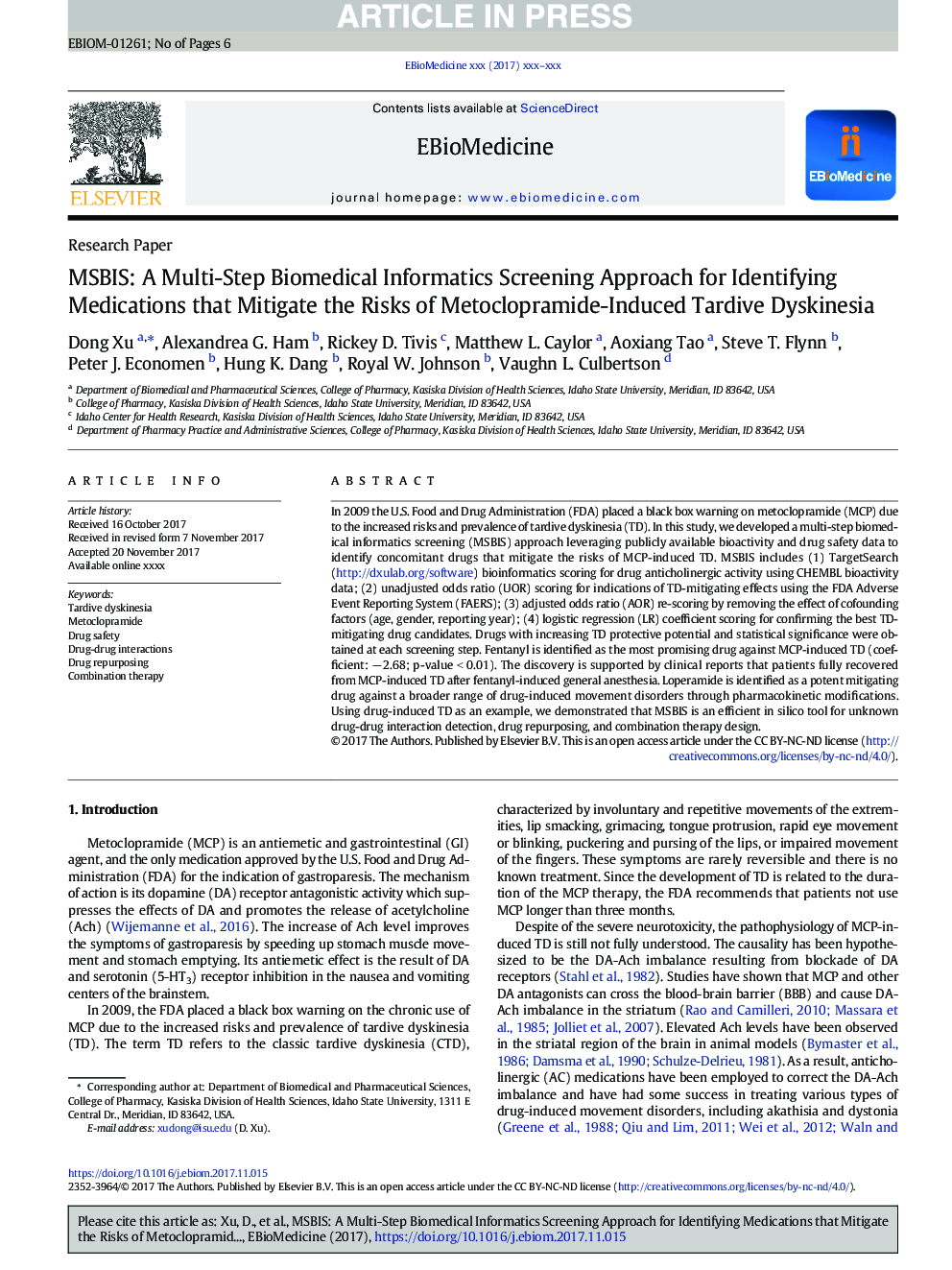| Article ID | Journal | Published Year | Pages | File Type |
|---|---|---|---|---|
| 8437762 | EBioMedicine | 2017 | 6 Pages |
Abstract
In 2009 the U.S. Food and Drug Administration (FDA) placed a black box warning on metoclopramide (MCP) due to the increased risks and prevalence of tardive dyskinesia (TD). In this study, we developed a multi-step biomedical informatics screening (MSBIS) approach leveraging publicly available bioactivity and drug safety data to identify concomitant drugs that mitigate the risks of MCP-induced TD. MSBIS includes (1) TargetSearch (http://dxulab.org/software) bioinformatics scoring for drug anticholinergic activity using CHEMBL bioactivity data; (2) unadjusted odds ratio (UOR) scoring for indications of TD-mitigating effects using the FDA Adverse Event Reporting System (FAERS); (3) adjusted odds ratio (AOR) re-scoring by removing the effect of cofounding factors (age, gender, reporting year); (4) logistic regression (LR) coefficient scoring for confirming the best TD-mitigating drug candidates. Drugs with increasing TD protective potential and statistical significance were obtained at each screening step. Fentanyl is identified as the most promising drug against MCP-induced TD (coefficient: â2.68; p-value < 0.01). The discovery is supported by clinical reports that patients fully recovered from MCP-induced TD after fentanyl-induced general anesthesia. Loperamide is identified as a potent mitigating drug against a broader range of drug-induced movement disorders through pharmacokinetic modifications. Using drug-induced TD as an example, we demonstrated that MSBIS is an efficient in silico tool for unknown drug-drug interaction detection, drug repurposing, and combination therapy design.
Keywords
Related Topics
Life Sciences
Biochemistry, Genetics and Molecular Biology
Cancer Research
Authors
Dong Xu, Alexandrea G. Ham, Rickey D. Tivis, Matthew L. Caylor, Aoxiang Tao, Steve T. Flynn, Peter J. Economen, Hung K. Dang, Royal W. Johnson, Vaughn L. Culbertson,
